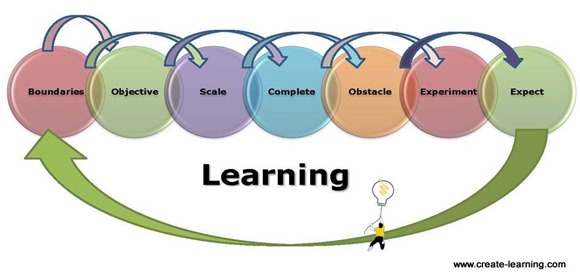Working to frame learning questions to help teams & team leaders navigate unclear complex teamwork.
 When working on a team goal that;
When working on a team goal that;
- rapidly changes,
- has never been achieved before,
- no best practice exists,
- innovative,
- requires bringing in new team members,
- has multiple stakeholders,
- requires the team to be uncomfortable
Learning should be embedded in the process…
Failure occurs. Challenges appear un-navigable. Comfort is minimal. Learning happens when psychological safety + accountability are high.
Here is a series of framing questions that may be helpful to a team in a complex + innovative challenge.
BOSCOEEL Team Coaching:
Boundaries
the edges of work
- Where are the boundaries of this work?
- How will the team know they have gone too far?
- How static / dynamic are these boundaries?
- Who can the team turn to with questions when it feels the edges or needs to check on these boundaries?
Objective
what is it that we want to have happen? what do we not want to have happen?
- What is the purpose, goal, reason for this work to occur?
- Clarify some attractors – what we want to have happen
- Clarify some detractors – what we don’t want to have happen
Scale
how far have you progressed
- Scale of 0 – 1 – 2 – 3 – 4 – 5 – 6 – 7 – 8 – 9 – 10 . With 10 being we have achieved success as defined in the objective & 0 being the opposite; where are we as of today?
Complete
evidence of the scale number
- How do we know we are at X (the number from the scale)?
- What evidence do we have that points to our progress?
- How did we make that happen?
Obstacle
current challenge or block or stuck factor
- What obstacles are currently in our way?
- Which 1 obstacle are we going to focus on now?
Experiment
ideas to navigate, ameliorate, obliterate the obstacle
- How can we work around this obstacle?
- How can we lessen the impact the obstacle has on the work?
- How can we remove or eradicate this obstacle?
Expect
expected outcome of the experiment
- Of the experiment ideas – which will we try next?
- What do we expect to have happen?
- How will we learn from this experiment?
Learning
happens through the entire process
- What was learned from the experiment?
- Did our expectations match the learning?
- Are we still within the boundaries?
This is illustrated as a linear process to capture some uses & ideas of the BOSCOEEL model, the reality of teamwork will not match. Like most models, it will create some common language to make progress in complex & innovative work.

